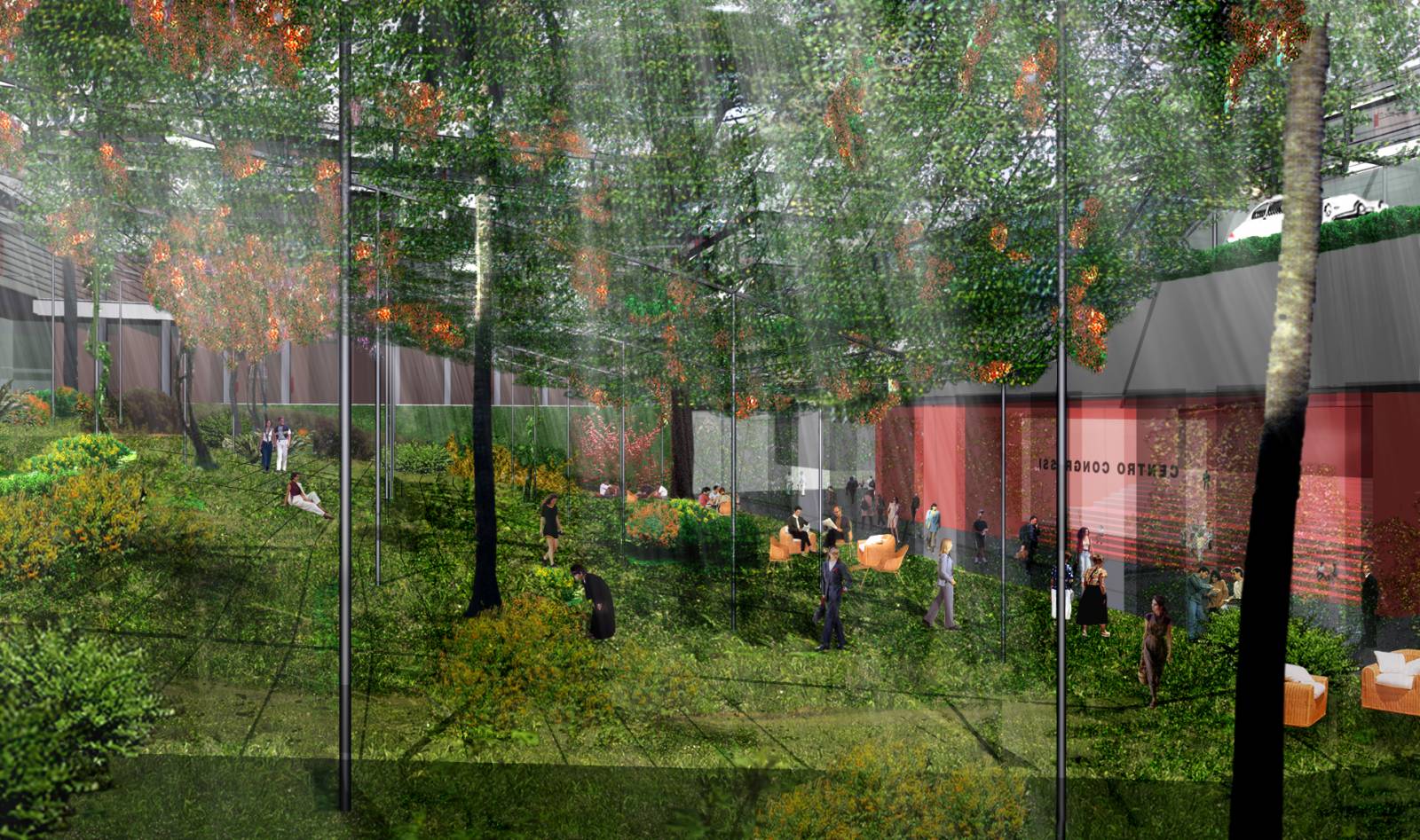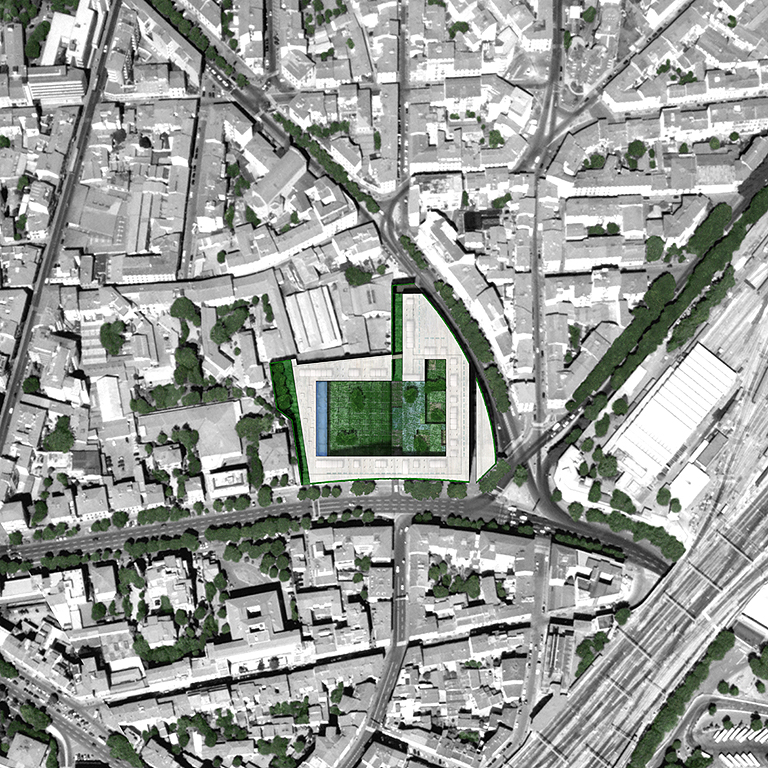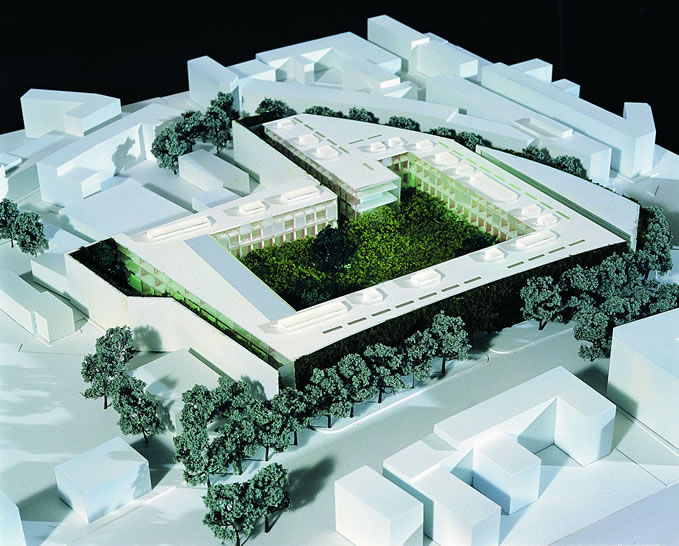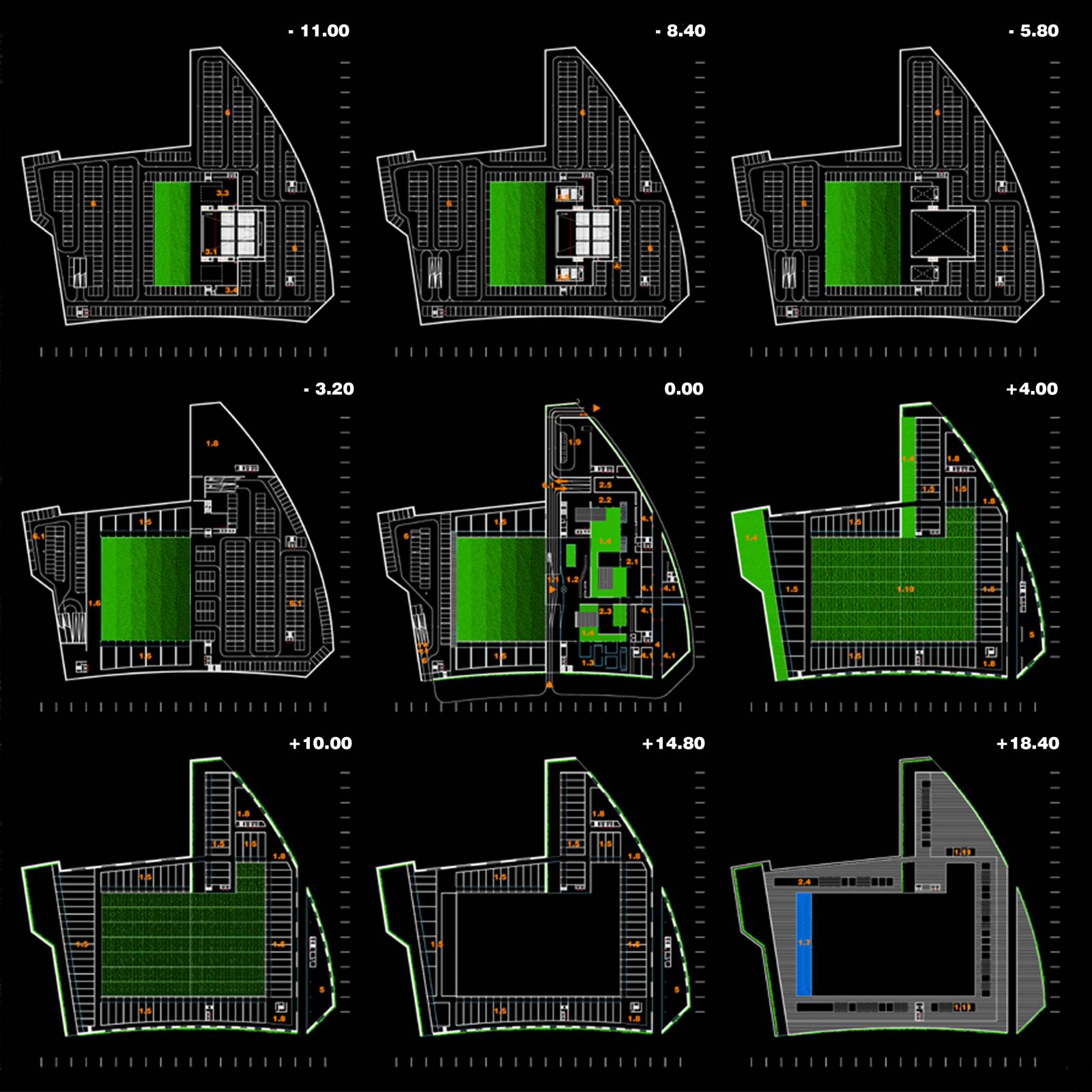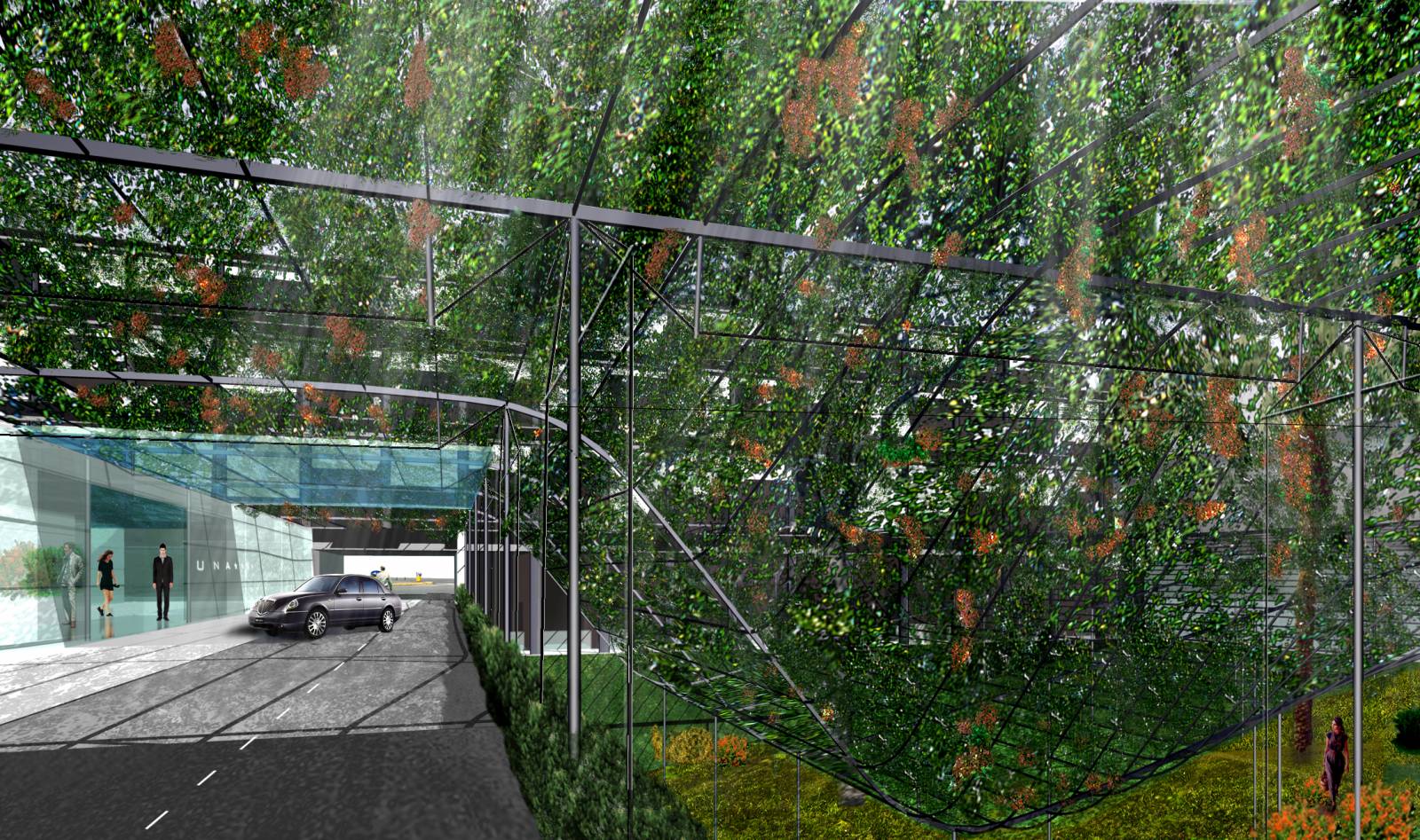Belfiore Hotel
- Florence, Italy
To build in Florence!
There are cities whose architecture is so perfect in our minds, the very thought of squaring up to it leaves one daunted.
Yet this is the last place one should admit defeat. Here is a city where one can leave pretensions behind but must at least show some degree of ambition!
This hotel must be a testimony of early twenty-first century architecture. It must understand that it is in Florence and accept the architectural terrain!
Our task then is to appreciate the distance which separates twenty-first century hotel architecture from Brunelleschi or Alberti!
It is my belief, for this and that reason, that if this project can symbolize the architecture of today, then it can make a significant impact on the idea of the hotel in a historic city. This is why the following proposal supposes a somewhat radical approach.
Contextually, while the site is undeniably well-located, there are certain drawbacks too, namely noise and the poor architectural quality of the immediate surroundings. Hence a design of splendid isolation. Isolation not in the sense of absence, nor difficulties of access or dialogue with the building. This simply means a singular, inward-looking nature, rendered here as a building whose role is not to coax us in nor to chatter with its neighbors: its very mystery invites and attracts.
Around its perimeter, a 15-metre high wall protects “something” within. Four entrances are cut into this wall, a vegetal structure some 1.5 metre deep.
This wall signifies a hidden and protected presence.
It is the instrument of our initial desire, which is to go inside. Which implies one is a guest or visitor at this hotel, because to enter is a privilege. Inside, the wall becomes a superposition of covered terraces, worthy of a galleried cloister or an Elizabethan theatre. And what do these happy few behold? Flowers. Not the kind that florists arrange in sentimental bouquets but the kind that fill fields and color landscapes; the kind, like rape and sunflower, that can only be appreciated by the hectare. Bougainvillea plays among the vines, wisteria and other creepers, climbing over pergolas to cover the entire inside space. A guest who arrives under the pergola steps into the foyer beneath climbing vines, or attends a congress in the sun-dappled shade of climbers and creepers. In contrast, their room sits above what reveals itself to be a world of plants and colors. This is a peaceful spot from which to take in a delightful, almost accidental landscape, with just a few trees to distance and conceal it from surrounding buildings.
The guestroom is also a terrace, separated from its neighbor by canvas walls that become lamps at nightfall, when these flat, vertical shades form the backdrop for multiple colorful themes. And so a succession of moods leads the guest to his room.
By car, the guest arrives beneath a canopy of green, emerging under the pergola that shades the foyer and above another which extends the conference area. The foyer itself is one landscape unfurling beneath another. A succession of indoor gardens, for the most part under the pergola, distinguish the different restaurants, bars and lounges. The foyer joins the thoroughfare that runs between Viale Belfiore and Via Benedetto Marcello, a Florentine shopping street open to all. Lifts and stairways take guests between the upper and lower levels. We step into a world of white, of substance, of mass. Walls and ceilings are covered in unpainted plaster. There are light-colored exposed aggregates in the washed concrete floors. Vaulted, perimetric passages take guests to their rooms; they are punctuated by 8-metre long horizontal windows, entirely hidden from the outside by plants and their trailing leaves and flowers. The pattern of shadows they throw across the floor creates a sort of vegetal stained glass. The rooms are also white, and the whole intimates something of a religious feel, perhaps because of the cloister-like structure, and a sense of serenity.
The rooftop terrace, on the uppermost level, includes a swimming pool, public and private sundecks, and a large function (conference) area. The entire space is dotted with marquees for private and public use.
The rooms are based essentially on a sequential layout, with curtains which the guest can open or close to inhabit the space in different ways according to their culture or preferences.
Such strongly marked typology is one of the essential features of the hotel’s architecture. It is also why guests will want to return over and over again.
Jean Nouvel
